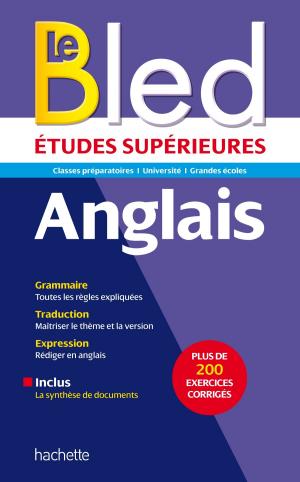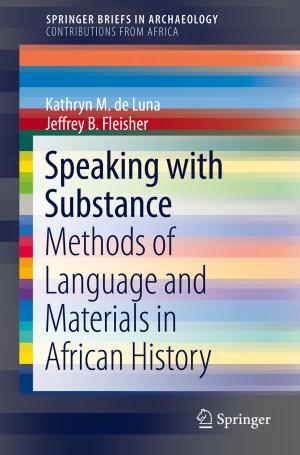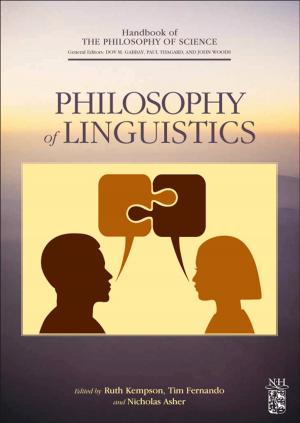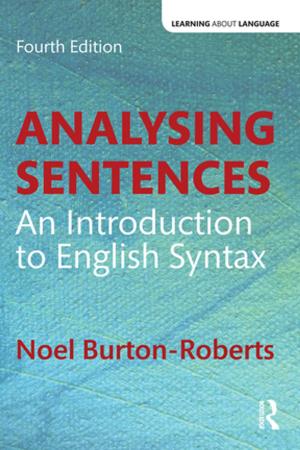Acquisition of Word Formation Devices in First & Second Languages
Nonfiction, Reference & Language, Language Arts, Linguistics| Author: | Endri Shqerra | ISBN: | 9781386134763 |
| Publisher: | Endri Shqerra | Publication: | April 28, 2018 |
| Imprint: | Language: | English |
| Author: | Endri Shqerra |
| ISBN: | 9781386134763 |
| Publisher: | Endri Shqerra |
| Publication: | April 28, 2018 |
| Imprint: | |
| Language: | English |
Early school-age English children acquire over 3000 words a year. The main factors which account for such rapid vocabulary growth are context and word-formation knowledge. Such vocabulary growth is also of great interest in the L2 acquisition. The first chapter explores the early acquisition of word-formation devices by English children and presents the principles through which cross-linguistic influence diverts L2 learners from the natural way of acquiring word-formation devices of their target language. It also presents the 'Dual Semantic Transparency' Hypothesis in the L2 acquisition. The second and third chapters utilize empirical evidence in examining the advanced acquisition of word-formation devices by both native speakers and L2 learners, as well as highlight the points in which morphological cross-linguistic transfer is more evident to L2 learners. The fourth chapter offers suggestions over the way L2 learners' knowledge of word-formation devices of their target language can be improved. The book is targeted to anyone interested in language acquisition.
Sample From the text: Extended Level Ordering Hypothesis orders English word formation and inflectional morphemes in four levels with respect to phonological effects, semantic regularity, and Productivity. According to its rule, the strong boundary separating the morphemes blocks the formation of non-compositional meaning (e. g., idiosyncratic words) as well as the operation of phonological rules of assimilation. Morphemes of English language which have a strong boundary are also productive.
The weak boundary, on the other hand, allows the formation of non- compositional meaning (i. e., idiosyncratic words are formed) and phonological rules of assimilation apply. Such morphemes and word-formation rules are less productive in the English language.
Level 1: Class 1 derivation, irregular inflection, irregular plural forming compounds
Level 2: Class 2 derivation
Level 3: Root Compounding (prefix non-, zero-derivation)
Level 4: Regular inflection
Level 4 involves inflectional morphemes which are considered to have the strongest boundary separating them from the word they attach. Level 3 involves root compounds. Allen, M. (1979) includes in Level 3 and the prefix non-, which has a strong boundary separating it from the word it attaches, a level stress, no assimilation by the word it attaches, and a completely compositional semantics.
Level 2 incorporates suffixes (e. g., Neutral suffixes) as well as Level 2 prefixes (e. g. re-, un-) which have a less strong a boundary separating them from the root they attach.
Level 1' incorporates suffixes (e. g., Non-neutral suffixes) and prefixes (e. g. sub-, de-, in-) which have a weak boundary separating them from the stem/word they attach. Kiparsky's (1982) situates in this level and irregular plural forming compounds.
Morphemes' order stipulated by Extended Level Ordering, as we shall also demonstrate in this book, corresponds with the order morphemes and word-formation rules are acquired by English children. Inflection morphemes are acquired first by English children, and even before word-formation morphemes. Root compounds are also the complex words acquired early by preschool age English children (Anglin, 1993; Berko, 1958). Level 2 affixes (e. g., Neutral suffixes) are also acquired by English children during their preschool age (Tyler & Nagy, 1989); though less than compound words. Morphemes and word-formation rules belonging to Level 4 (e. g., Non-neutral suffixes) are acquired last.
Though, Extended Level Ordering is not applicable in other languages.
Early school-age English children acquire over 3000 words a year. The main factors which account for such rapid vocabulary growth are context and word-formation knowledge. Such vocabulary growth is also of great interest in the L2 acquisition. The first chapter explores the early acquisition of word-formation devices by English children and presents the principles through which cross-linguistic influence diverts L2 learners from the natural way of acquiring word-formation devices of their target language. It also presents the 'Dual Semantic Transparency' Hypothesis in the L2 acquisition. The second and third chapters utilize empirical evidence in examining the advanced acquisition of word-formation devices by both native speakers and L2 learners, as well as highlight the points in which morphological cross-linguistic transfer is more evident to L2 learners. The fourth chapter offers suggestions over the way L2 learners' knowledge of word-formation devices of their target language can be improved. The book is targeted to anyone interested in language acquisition.
Sample From the text: Extended Level Ordering Hypothesis orders English word formation and inflectional morphemes in four levels with respect to phonological effects, semantic regularity, and Productivity. According to its rule, the strong boundary separating the morphemes blocks the formation of non-compositional meaning (e. g., idiosyncratic words) as well as the operation of phonological rules of assimilation. Morphemes of English language which have a strong boundary are also productive.
The weak boundary, on the other hand, allows the formation of non- compositional meaning (i. e., idiosyncratic words are formed) and phonological rules of assimilation apply. Such morphemes and word-formation rules are less productive in the English language.
Level 1: Class 1 derivation, irregular inflection, irregular plural forming compounds
Level 2: Class 2 derivation
Level 3: Root Compounding (prefix non-, zero-derivation)
Level 4: Regular inflection
Level 4 involves inflectional morphemes which are considered to have the strongest boundary separating them from the word they attach. Level 3 involves root compounds. Allen, M. (1979) includes in Level 3 and the prefix non-, which has a strong boundary separating it from the word it attaches, a level stress, no assimilation by the word it attaches, and a completely compositional semantics.
Level 2 incorporates suffixes (e. g., Neutral suffixes) as well as Level 2 prefixes (e. g. re-, un-) which have a less strong a boundary separating them from the root they attach.
Level 1' incorporates suffixes (e. g., Non-neutral suffixes) and prefixes (e. g. sub-, de-, in-) which have a weak boundary separating them from the stem/word they attach. Kiparsky's (1982) situates in this level and irregular plural forming compounds.
Morphemes' order stipulated by Extended Level Ordering, as we shall also demonstrate in this book, corresponds with the order morphemes and word-formation rules are acquired by English children. Inflection morphemes are acquired first by English children, and even before word-formation morphemes. Root compounds are also the complex words acquired early by preschool age English children (Anglin, 1993; Berko, 1958). Level 2 affixes (e. g., Neutral suffixes) are also acquired by English children during their preschool age (Tyler & Nagy, 1989); though less than compound words. Morphemes and word-formation rules belonging to Level 4 (e. g., Non-neutral suffixes) are acquired last.
Though, Extended Level Ordering is not applicable in other languages.















